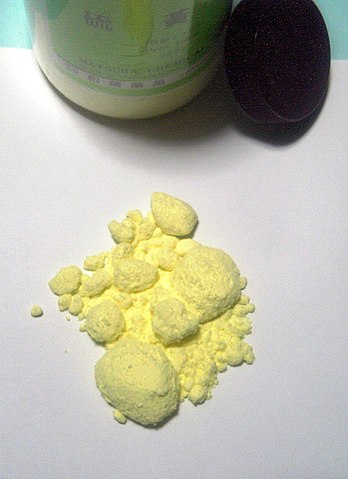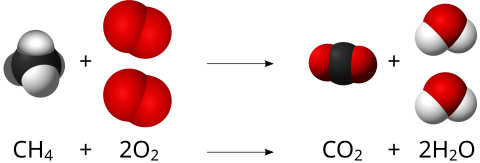Basic concepts in chemical processes, such as the Law of Chemical Equilibrium and the Equilibrium Constant, provide about what happen into how reactions arrive at a state of equilibrium. These ideas contain predicting a reaction’s course as well as the reactant and product concentrations at equilibrium.

What is Chemical Equilibrium?
In a reversible reaction, chemical equilibrium is reached when the forward and backward reaction rates are equal. Even though the reactions are still occurring dynamically at this phase, the reactant and product concentrations stay constant over time.
For example, consider the reversible reaction: A + B ⇋ C + D
At equilibrium:
The rate of A + B → C + D equals the rate of C + D → A + B.
The concentrations of A, B, C, and D remain constant, though they are not necessarily equal.
Law of Chemical Equilibrium
According to the Law of Chemical Equilibrium, the ratio of the product of the product of the concentrations of reactants and products, each raised to the power of its stoichiometric coefficient, is constant at a specific temperature.For a general reaction: aA + bB ⇋ cC + dD
The equilibrium constant Kc is expressed as:
Kc = [C]c [D]d / [A]a [B]b
Here:
[A], [B], [C], and [D] are the molar concentrations of the substances at equilibrium.
a, b, c, and d are the stoichiometric coefficients from the balanced chemical equation.
Law of Chemical Equilibrium and Equilibrium Constant
Equilibrium Constant (Kc)
The value of Kc provides vital information about the position of equilibrium:
If Kc is very large (Kc > 1): The equilibrium favours the formation of products, means there will be more products than reactants at equilibrium.
If Kc is very small (Kc < 1): The equilibrium favours the reactants, means there will be more reactants than products at equilibrium.
If Kc is close to 1 (Kc ≈ 1): Both reactants and products are present in significant amounts at equilibrium.
Factors Affecting Equilibrium Constant
The equilibrium constant Kc depends only on temperature. Changes in concentrations, pressure, or volume can shift the equilibrium position (as described by Le Chatelier’s Principle), but they do not alter the value of Kc.
Examples 1.Haber Process
The reaction for ammonia synthesis is: N2(g) + 3H2(g) ⇋ 2NH3(g)
At equilibrium, Kc = [NH3]2 / [N2] [H2]3.
2. Decomposition of Calcium Carbonate:-
CaCO3(s) ⇋ CaO(s) + CO2(g)
Here, Kc = [CO2], as the concentration of solids (CaCO3 and CaO) is constant and not included in the expression.
Applications of the Law of Chemical Equilibrium
1.Industrial Processes: Equilibrium helps optimise conditions for maximum give up in industrial reactions like the Haber process.
2. Biological Systems: Many biological processes, like oxygen transport in the blood, depend on equilibrium principles.
3. Environmental Chemistry: The balance of atmospheric gases like CO2 and O2 can be analysed using equilibrium concepts.

Key points :-
At a temperature, the product of concentrations of the reaction products raised to the respective stoichiometric coefficient in the balanced chemical equation divide by the product of concentrations of the reactants raised to their individual stoichiometric coefficients has a constant value.
This is known as the equilibrium law or law of chemical equilibrium.
Chemical equation | Equilibrium constant |
aA + bB ⇋ cC + dD | Kc |
cC +dD ⇋ aA + bB | Kc = (1 / Kc) |
naA + nbB ⇋ ncC + ndD | K”c = (Kc)n |

Note :-
Two essential chemical tools that shed light on the behavior of reversible reactions are the Law of Chemical Equilibrium and the Equilibrium Constant. We can forecast the results of reactions under different circumstances by computing Kc, which helps in everyday applications, industry, and research.
When the forward and backward rates of a reversible reaction are identical, the reaction is said to be in chemical equilibrium. Although the reactions are still occurring dynamically, the reactant and product concentrations are now constant.
According to the Law of Chemical Equilibrium, the ratio of the product of the product of the concentrations of reactants and products, each raised to the power of its stoichiometric coefficient, is constant at a specific temperature.
For a reaction aA + bB ⇋ cC + dD equilibrium constant (Kc) is:
Kc = [C]c [D]d / [A]a [B]b
The equilibrium constant (Kc) is a numerical value that indicates the ratio of concentrations of products to reactants at equilibrium.
Kc > 1K : Products are favored (more products than reactants).
Kc < 1K : Reactants are favored (more reactants than products).
Kc ≈ 1K : Both reactants and products are present in significant amounts.
Temperature: Kc depends on temperature and changes with it. For endothermic reactions, Kc increases with temperature, whereas for exothermic reactions, Kc decreases.
Pressure or Concentration: These factors shift the equilibrium position (as per Le Chatelier’s Principle) but do not change the value of Kc.
The concentrations of solids and pure liquids remain constant during a reaction. Since their activity is regarded as 1, they are therefore excluded from the expression for the equilibrium constant.
Kc: The equilibrium constant expressed in terms of molar concentrations (mol / L).
Kp: The equilibrium constant expressed in terms of partial pressures (used for gaseous reactions).
2 thoughts on “Law of Chemical Equilibrium and Equilibrium Constant”